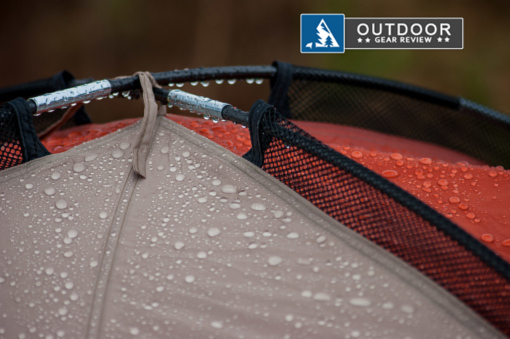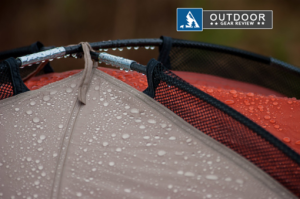
How to Clean a Tent
Hey there, fellow tent camping enthusiast! We all know that feeling of returning home from a weekend getaway with a dusty, dirty tent. After all, that’s a sign of a good time spent in nature, right? But, if your trusty home in the outdoors starts to look a little too grimy, with ugly stains, funky odors, campfire smoke, or a zipper that’s not working as smoothly as it used to, it’s time to give it some TLC and get it cleaned up! Don’t worry, with a little bit of effort and the right techniques, you can easily bring your tent back to its sparkling clean and fresh-smelling state. Let’s dive in and learn how to properly clean your tent so that it’s ready for your next camping adventure!
Step by Step: Cleaning the Tent
Step 1: Gather Your Cleaning Supplies
Before you start cleaning your tent, it’s essential to gather all the necessary cleaning supplies. Here’s a list of items you will need:
- Mild soap or tent-specific cleaning solution: Avoid using harsh detergents, bleach, or other abrasive cleaners, as they can damage the tent fabric or waterproof coatings. Do Not use Woolite, as it contains softening agents which can damage the tent. Look for a mild fragrance-free soap or a tent specific cleaner like Nikwax Tech Wash.

- Soft-bristled brush or sponge: You’ll need a soft-bristled brush or sponge to gently scrub the tent fabric and remove dirt and debris. Avoid using abrasive brushes or sponges that can damage the tent fabrics or waterproof coating.
- Water source: You’ll need access to clean cool to warm water to rinse off the soap or cleaning solution from the tent.
- Broom: In the event you need to sweep dirt or sand from the inside of the tent.
- Towels or rags: Towels or rags can be used to wipe down the tent fabric or to dry the tent after cleaning.
- Bathtub or large bucket: Needs to be large enough to submerge the entire tent.
Once you have gathered all your cleaning supplies, you’re ready to start cleaning your tent.
Step 2: Wash the Tent
- Clean obvious spots with soap: Grab a cloth or non abrasive sponge and a small amount of mild dish soap. Gently spot clean any extra-dirty areas on your tent, taking care not to scrub too hard and damage the fabric.
- Get the bathtub ready: Get your tub ready for tent-cleaning action! Fill it up with cool to lukewarm water and add your tent-cleaner product, following the directions on the bottle for the right amount.
- Submerge the tent: Take the plunge! Immerse your tent and rainfly in the tub, letting them soak according to the instructions on the cleaner bottle. This will help loosen dirt and grime for easier cleaning. Hand wash the tent with a clean cloth.
- Unzip the tent: Unzip the tent doors and windows turn the tent inside out, getting it all prepped for a thorough cleaning. This will allow for the inside walls and tent floor to be better cleaned.
 Rinse thoroughly: Drain the tub and refill it with clean water. You may need to repeat this step a few times to make sure all the soap is rinsed off your tent and rainfly, leaving them squeaky clean.
Rinse thoroughly: Drain the tub and refill it with clean water. You may need to repeat this step a few times to make sure all the soap is rinsed off your tent and rainfly, leaving them squeaky clean.- Clean the rain fly: If your tent has a rainfly, it’s important to clean it as well. The rainfly is designed to protect your tent from rain and moisture, so keeping it clean is essential for its performance. Follow the manufacturer’s instructions for cleaning the rainfly, as different materials may require different care.
- Don’t forget the zippers: Zippers are critical for the functionality of your tent, so it’s important to keep them clean and well-maintained. Use a soft-bristled brush or a toothbrush to gently scrub the zippers with the cleaning solution. Pay close attention to any dirt or debris that may have accumulated in the zipper teeth or slider.
Remember, always follow the instructions on the cleaner bottle for the best results, and be gentle with your tent to avoid any damage. Happy cleaning!
Step 3: Set Up Your Tent for Drying
- Find a clean and flat surface: Look for a clean and flat surface, such as a grassy patch or a clean driveway, to set up your tent for drying. Avoid setting up your tent on rough or rocky surfaces that can potentially damage the tent fabric.
- Set up the tent: Staking down the corners and or using the guy lines will help keep the tent stable during the cleaning process.
- Dry completely: Gently pat the tent fabric dry with a clean towel or cloth. Avoid wringing or twisting the fabric, as it can damage the waterproof coatings. Leave the tent set up with the doors and windows open to allow for proper air circulation and faster drying. Make sure the tent is completely dry before packing it away….you dont want to find a moldy tent on your next camping trip.
Extra Tips: Addressing Pine Sap, Stains, Mildew, and more
- Pine sap on the tent: If you happen to find pesky tree sap on your tent, no worries, we’ve got you covered! Simply spot clean the affected area with a little bit of mineral oil, being careful not to scrub too hard and damage the fabric. Another handy trick is to use alcohol-based products like hand sanitizer or wet wipes. Just make sure to rinse thoroughly with water after the sap is removed, and your tent will be good as new!
- Treat mildew, mold, or a funky smell: To tackle mildew, mold, or unpleasant odors in your tent, an enzyme cleaner like MiraZyme™ can come to the rescue! Just make sure to carefully follow the directions on the enzyme cleaner bottle, especially when it comes to the soaking time. Leaving your tent soaking for longer than recommended can potentially risk hydrolysis, where water starts to break down the waterproof polyurethane coating. So, be sure to follow the instructions closely to ensure the best results without compromising the integrity of your tent’s waterproofing
- Spot clean stains: If there are stubborn stains on your tent fabric, you can use a gentle tent-specific stain remover or a mild soap mixed with water to spot clean the soiled areas. Apply the solution to the stained area and use a soft brush or cloth to gently scrub the stain in a circular motion. Rinse off the soap thoroughly with clean water and pat dry with a towel.
- Avoid machine washing or dry cleaning: Machine washing or dry cleaning your tent can damage the fabric and waterproof coatings. Always follow the manufacturer’s instructions for cleaning your tent and avoid using washing machines, dryers, or dry cleaning methods.
- Check for damage: While cleaning your tent, take the opportunity to inspect it for any damage, such as tears, holes, or worn-out seams. Address any repairs promptly to prevent further damage during your next camping trip.
- Tent poles: Poles can be wiped down with a damp rag or towel.
Why is Cleaning Your Tent Important?
Cleaning your tent is not just about aesthetics; it’s essential for the durability and functionality of the tent. Here are a few reasons why proper tent cleaning is crucial:
Longevity: Regularly cleaning your tent can extend its lifespan. Dirt, dust, and other debris can accumulate on your tent, causing wear and tear over time. By cleaning your tent, you can remove these particles and prevent them from causing damage.
Performance: Dirt and grime can also affect the performance of your tent. Accumulated debris can clog tent zippers, mesh panels, and rainfly vents, reducing their effectiveness. Keeping your tent clean ensures that it functions optimally and provides the protection and ventilation you need during outdoor adventures.
Hygiene: Tents can harbor dirt, bacteria, and even mold if not properly cleaned. These can create an unhealthy environment inside your tent and potentially cause health issues. Regular cleaning helps maintain a clean and hygienic tent interior, promoting a healthier camping experience.
Waterproofing: Many tents come with waterproof coatings to keep you dry during rainy weather. However, these coatings can wear off over time due to dirt and other contaminants. Cleaning your tent and reapplying waterproofing treatments can help restore and maintain its waterproof capabilities.
Final Thoughts on Cleaning a Tent
Properly cleaning and maintaining your tent is essential to ensure its longevity and performance during your camping adventures. Regular cleaning and proper storage will help prevent mold, mildew, and damage to the tent fabric, coatings, and seams. Follow the manufacturer’s instructions for cleaning your specific tent, and be gentle with the fabric and coatings to avoid any damage. Inspect your tent for any repairs needed and store it in a cool, dry, and well-ventilated area in a breathable storage bag. By taking care of your tent, you can enjoy many camping trips with a clean, well-maintained, and reliable shelter to enhance your outdoor experience. Happy camping!


